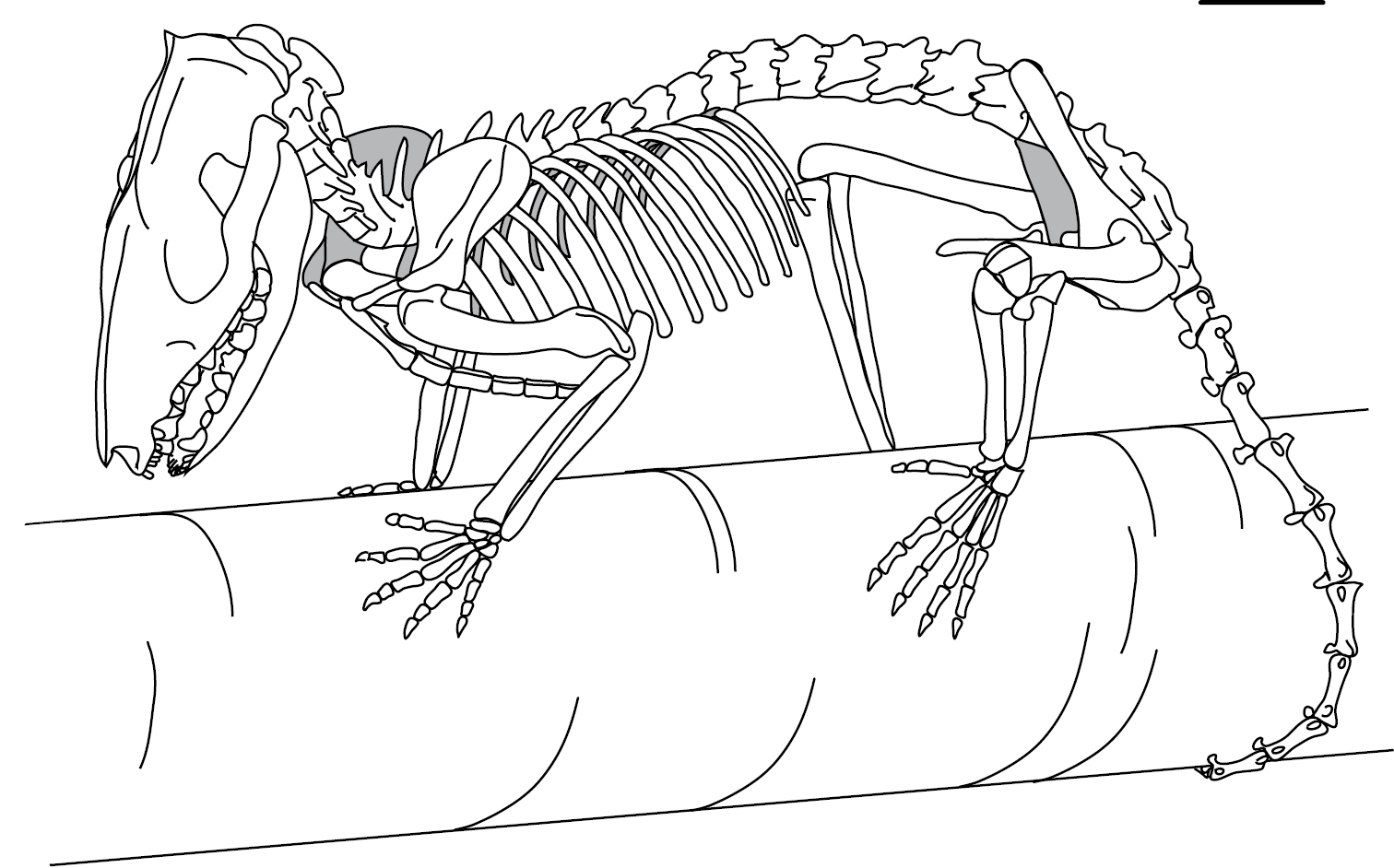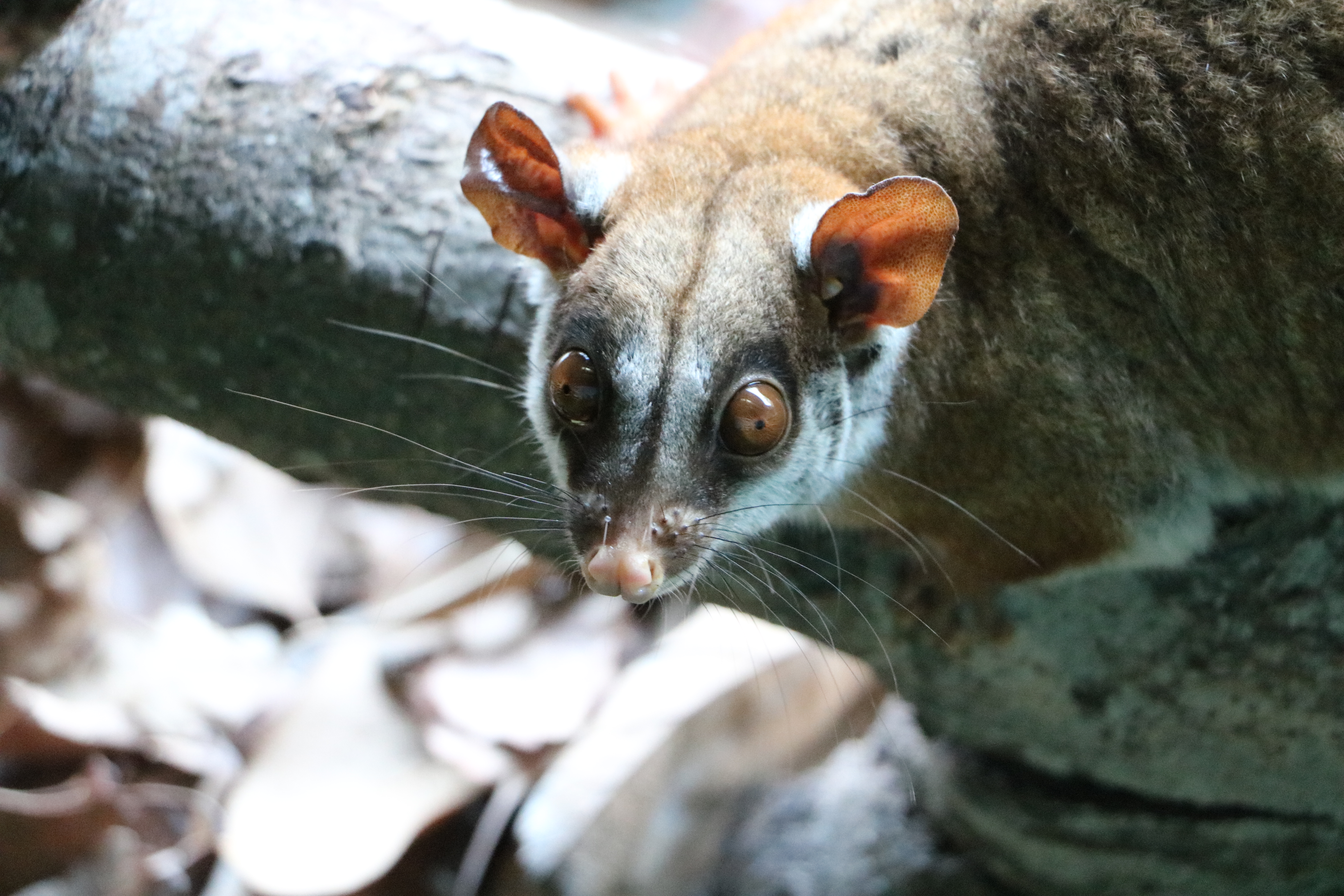|
Caluromyinae
Caluromyinae is a subfamily of opossums. It includes the extant genera '' Caluromys'' and ''Caluromysiops'', as well as the extinct '' Pachybiotherium''. Until recently, the genus '' Glironia'' was also included. It has sometimes been classed as a full family, Caluromyidae. Classification Classification based on Voss and Jansa (2009) * Subfamily Caluromyinae ** Genus '' Caluromys'' *** Subgenus ''Caluromys'' **** Bare-tailed woolly opossum (''Caluromys philander'') *** Subgenus ''Mallodelphys'' **** Derby's woolly opossum (''Caluromys derbianus'') **** Brown-eared woolly opossum (''Caluromys lanatus'') ** Genus ''Caluromysiops'' *** Black-shouldered opossum The black-shouldered opossum (''Caluromysiops irrupta''), also known as the white-eared opossum, is an opossum known from western Brazil and southeastern Peru. It was first described by Colin Campbell Sanborn, curator of Field Museum of Natur ... (''Caluromysiops irrupta'') **Genus †'' Pachybiotherium'' ***†'' ... [...More Info...] [...Related Items...] OR: [Wikipedia] [Google] [Baidu] |
Opossum
Opossums () are members of the marsupial order Didelphimorphia () endemic to the Americas. The largest order of marsupials in the Western Hemisphere, it comprises 93 species in 18 genera. Opossums originated in South America and entered North America in the Great American Interchange following the connection of North and South America. The Virginia opossum is the only species found in the United States and Canada. It is often simply referred to as an opossum, and in North America it is commonly referred to as a possum (; sometimes rendered as ''possum'' in written form to indicate the dropped "o"). Possums should not be confused with the Australasian arboreal marsupials of suborder Phalangeriformes that are also called possums because of their resemblance to the Didelphimorphia. The opossum is typically a nonaggressive animal. Etymology The word ''opossum'' is borrowed from the Powhatan language and was first recorded between 1607 and 1611 by John Smith (as ''opassom'') ... [...More Info...] [...Related Items...] OR: [Wikipedia] [Google] [Baidu] |
Glironia
The bushy-tailed opossum (''Glironia venusta'') is an opossum from South America. It was first described by English zoologist Oldfield Thomas in 1912. It is a medium-sized opossum characterized by a large, oval, dark ears, fawn to cinnamon coat with a buff to gray underside, grayish limbs, and a furry tail. Little is known of the behavior of the bushy-tailed opossum; less than 25 specimens are known. It appears to be arboreal (tree-living), nocturnal (active mainly at night) and solitary. The diet probably comprises insects, eggs and plant material. This opossum has been captured from heavy, humid, tropical forests; it has been reported from Bolivia, Brazil, Colombia, Ecuador and Peru. The IUCN classifies it as least concern. Taxonomy and etymology The bushy-tailed opossum is the sole member of ''Glironia'', and is placed in the family Didelphidae. It was first described by English zoologist Oldfield Thomas in 1912. Earlier, ''Glironia'' was considered part of the subfami ... [...More Info...] [...Related Items...] OR: [Wikipedia] [Google] [Baidu] |
Bare-tailed Woolly Opossum
The bare-tailed woolly opossum (''Caluromys philander'') is an opossum from South America. It was first described by Swedish zoologist Carl Linnaeus in 1758. The bare-tailed woolly opossum is characterized by a gray head, brown to gray coat, orange to gray underside and a partially naked tail. It is nocturnal (active mainly at night) and solitary; there is hardly any social interaction except between mother and juveniles and in mating pairs. The opossum constructs nests in tree cavities, and its litter size ranges from one to seven. Gestation lasts 25 days, and the juveniles exit the pouch after three months; weaning occurs a month later. The bare-tailed woolly opossum inhabits subtropical forests, rainforests, secondary forests, and plantations; its range extends from northern Venezuela to northeastern and southcentral Brazil. The IUCN classifies this opossum as least concern. Names It is called mucura-xixica in Portuguese, zarigüeya lanuda parda in Spanish, and wakaro in the ... [...More Info...] [...Related Items...] OR: [Wikipedia] [Google] [Baidu] |
Derby's Woolly Opossum
Derby's woolly opossum (''Caluromys derbianus''), or the Central American woolly opossum, is an opossum found in deciduous and moist evergreen forests of Central America, from southern Mexico to western Ecuador and Colombia. It was first described by English naturalist George Robert Waterhouse, and named in honor of Edward Smith-Stanley, 13th Earl of Derby. Derby's woolly opossum is the largest in its genus, with a total length of and weight between . The coat is brown and the underside white-buff to golden-brown. The opossum is nocturnal (active mainly at night), arboreal (tree-living) and solitary. Diet consists of fruits, nectar, small invertebrates and vertebrates. The time when breeding takes place varies geographically. The litter size ranges from one to six. The IUCN classifies this opossum as least concern. Taxonomy and etymology Derby's woolly opossum is one of the three members of '' Caluromys'', and is placed in the family Didelphidae. It was first described by ... [...More Info...] [...Related Items...] OR: [Wikipedia] [Google] [Baidu] |
Brown-eared Woolly Opossum
The brown-eared woolly opossum (''Caluromys lanatus''), also known as the western woolly opossum, is an opossum from South America. It was first described by German naturalist Ignaz von Olfers in 1818. The opossum is characterized by a brown to reddish brown coat and similarly colored limbs, yellow to orange underbelly, hairless, brown ears with a hint of pink, and a tail furred on the back for up to half of its length. The brown-eared woolly opossum is nocturnal (active mainly at night), solitary and omnivorous. The IUCN lists it as least concern. Taxonomy The brown-eared woolly opossum is one of the three members of '' Caluromys'', and is placed in the family Didelphidae. It was first described by German naturalist Ignaz von Olfers as ''Didelphys lanata'' in 1818. It was given its present binomial name, ''Caluromys lanatus'', by American zoologist Joel Asaph Allen in 1900. A 1955 revision of marsupial phylogeny grouped ''Caluromys'', '' Caluromysiops'', '' Dromiciops' ... [...More Info...] [...Related Items...] OR: [Wikipedia] [Google] [Baidu] |
Caluromysiops
The black-shouldered opossum (''Caluromysiops irrupta''), also known as the white-eared opossum, is an opossum known from western Brazil and southeastern Peru. It was first described by Colin Campbell Sanborn, curator of Field Museum of Natural History, in 1951. The black-shouldered opossum is characterized by a gray coat, gray underbelly, and broad black stripes that extend from the forefeet, meet on the shoulders, run along the midline of the back and then split into parallel stripes that run down the hind feet. Little is known of the behavior of the black-shouldered opossum. It is nocturnal and arboreal. It is known to feed on fruits and rodents. The opossum inhabits humid forests. The IUCN classifies it as least concern. Taxonomy The black-shouldered opossum is the sole member of ''Caluromysiops'', and is placed in the family Didelphidae. No subspecies are recognized. The cladogram below, based on a 2016 study, shows the phylogenetic relationships of the brown-eared wooll ... [...More Info...] [...Related Items...] OR: [Wikipedia] [Google] [Baidu] |
Black-shouldered Opossum
The black-shouldered opossum (''Caluromysiops irrupta''), also known as the white-eared opossum, is an opossum known from western Brazil and southeastern Peru. It was first described by Colin Campbell Sanborn, curator of Field Museum of Natural History, in 1951. The black-shouldered opossum is characterized by a gray coat, gray underbelly, and broad black stripes that extend from the forefeet, meet on the shoulders, run along the midline of the back and then split into parallel stripes that run down the hind feet. Little is known of the behavior of the black-shouldered opossum. It is nocturnal and arboreal. It is known to feed on fruits and rodents. The opossum inhabits humid forests. The IUCN classifies it as least concern. Taxonomy The black-shouldered opossum is the sole member of ''Caluromysiops'', and is placed in the family Didelphidae. No subspecies are recognized. The cladogram below, based on a 2016 study, shows the phylogenetic relationships of the brown-eared ... [...More Info...] [...Related Items...] OR: [Wikipedia] [Google] [Baidu] |
Subfamily
In biological classification, a subfamily ( Latin: ', plural ') is an auxiliary (intermediate) taxonomic rank, next below family but more inclusive than genus. Standard nomenclature rules end subfamily botanical names with "-oideae", and zoological names with "-inae". See also * International Code of Nomenclature for algae, fungi, and plants The ''International Code of Nomenclature for algae, fungi, and plants'' (ICN) is the set of rules and recommendations dealing with the formal botanical names that are given to plants, fungi and a few other groups of organisms, all those "trad ... * International Code of Zoological Nomenclature * Rank (botany) * Rank (zoology) Sources {{biology-stub ... [...More Info...] [...Related Items...] OR: [Wikipedia] [Google] [Baidu] |
Extant Taxon
Neontology is a part of biology that, in contrast to paleontology, deals with living (or, more generally, ''recent'') organisms. It is the study of extant taxa (singular: extant taxon): taxa (such as species, genera and families) with members still alive, as opposed to (all) being extinct. For example: * The moose (''Alces alces'') is an extant species, and the dodo (''Raphus cucullatus'') is an extinct species. * In the group of molluscs known as the cephalopods, there were approximately 600 extant species and 7,500 extinct species. A taxon can be classified as extinct if it is broadly agreed or certified that no members of the group are still alive. Conversely, an extinct taxon can be reclassified as extant if there are new discoveries of living species (" Lazarus species"), or if previously-known extant species are reclassified as members of the taxon. Most biologists, zoologists, and botanists are in practice neontologists, and the term neontologist is used ... [...More Info...] [...Related Items...] OR: [Wikipedia] [Google] [Baidu] |
Extinct
Extinction is the termination of a kind of organism or of a group of kinds ( taxon), usually a species. The moment of extinction is generally considered to be the death of the last individual of the species, although the capacity to breed and recover may have been lost before this point. Because a species' potential range may be very large, determining this moment is difficult, and is usually done retrospectively. This difficulty leads to phenomena such as Lazarus taxa, where a species presumed extinct abruptly "reappears" (typically in the fossil record) after a period of apparent absence. More than 99% of all species that ever lived on Earth, amounting to over five billion species, are estimated to have died out. It is estimated that there are currently around 8.7 million species of eukaryote globally, and possibly many times more if microorganisms, like bacteria, are included. Notable extinct animal species include non-avian dinosaurs, saber-toothed cats, dod ... [...More Info...] [...Related Items...] OR: [Wikipedia] [Google] [Baidu] |



.jpg)